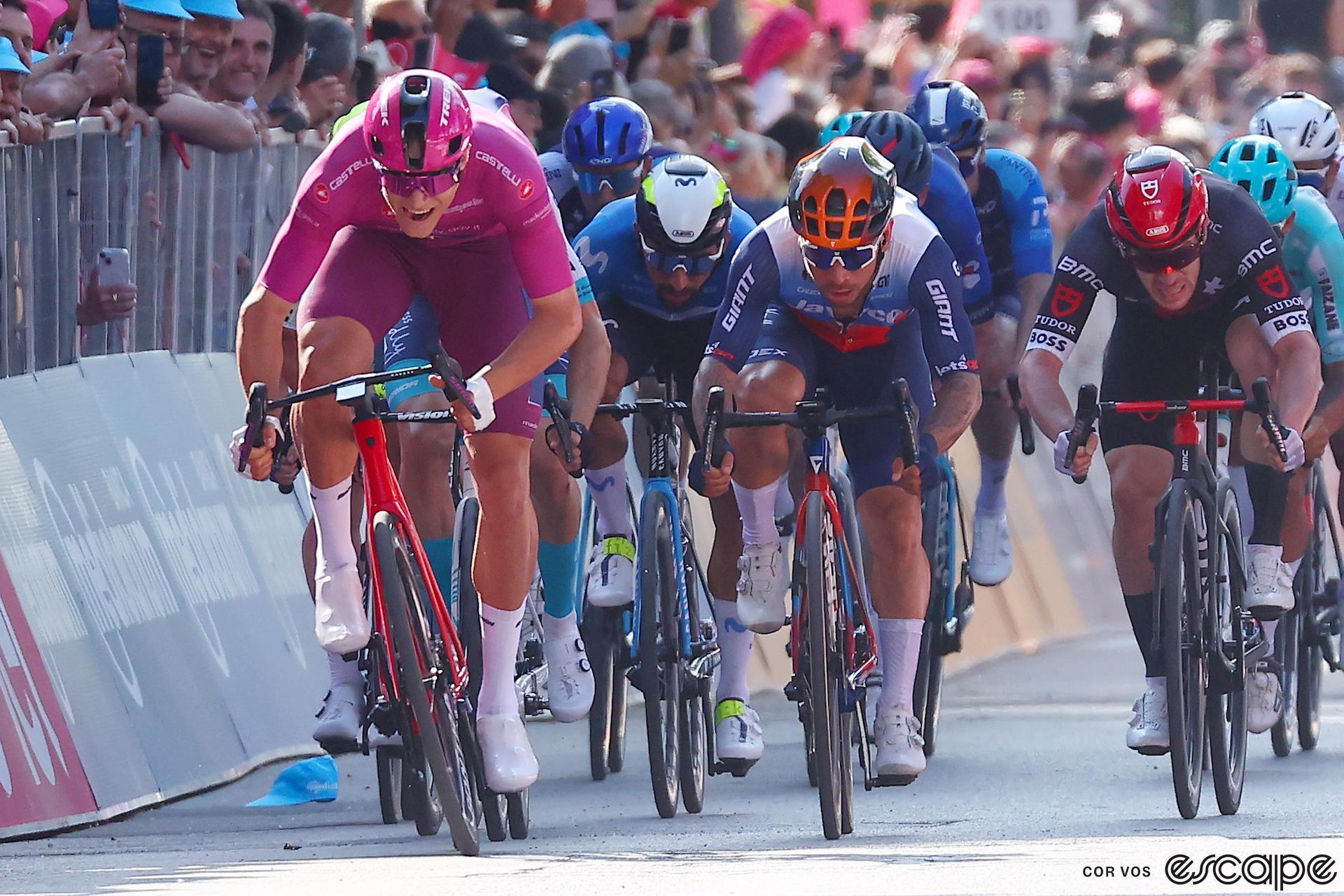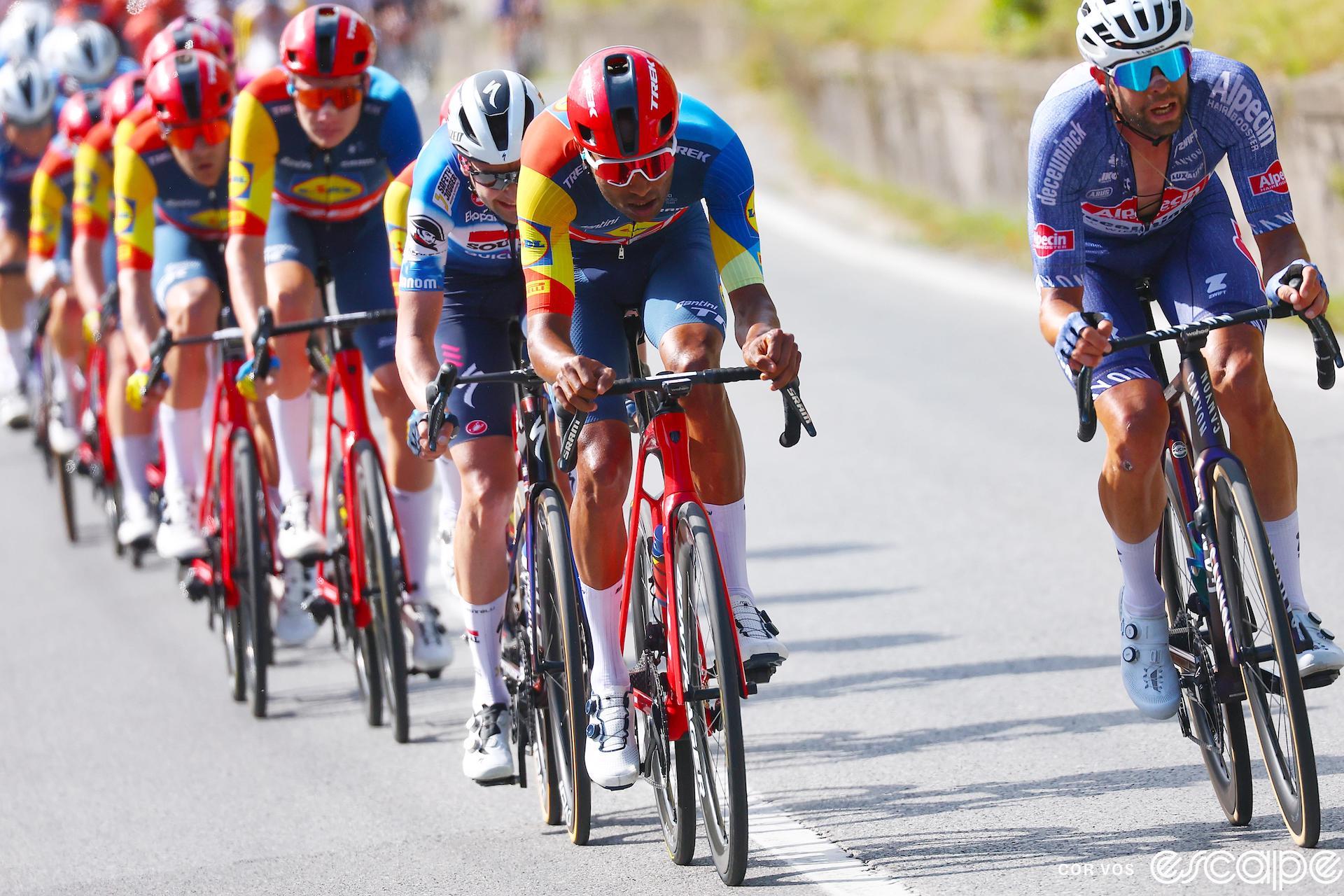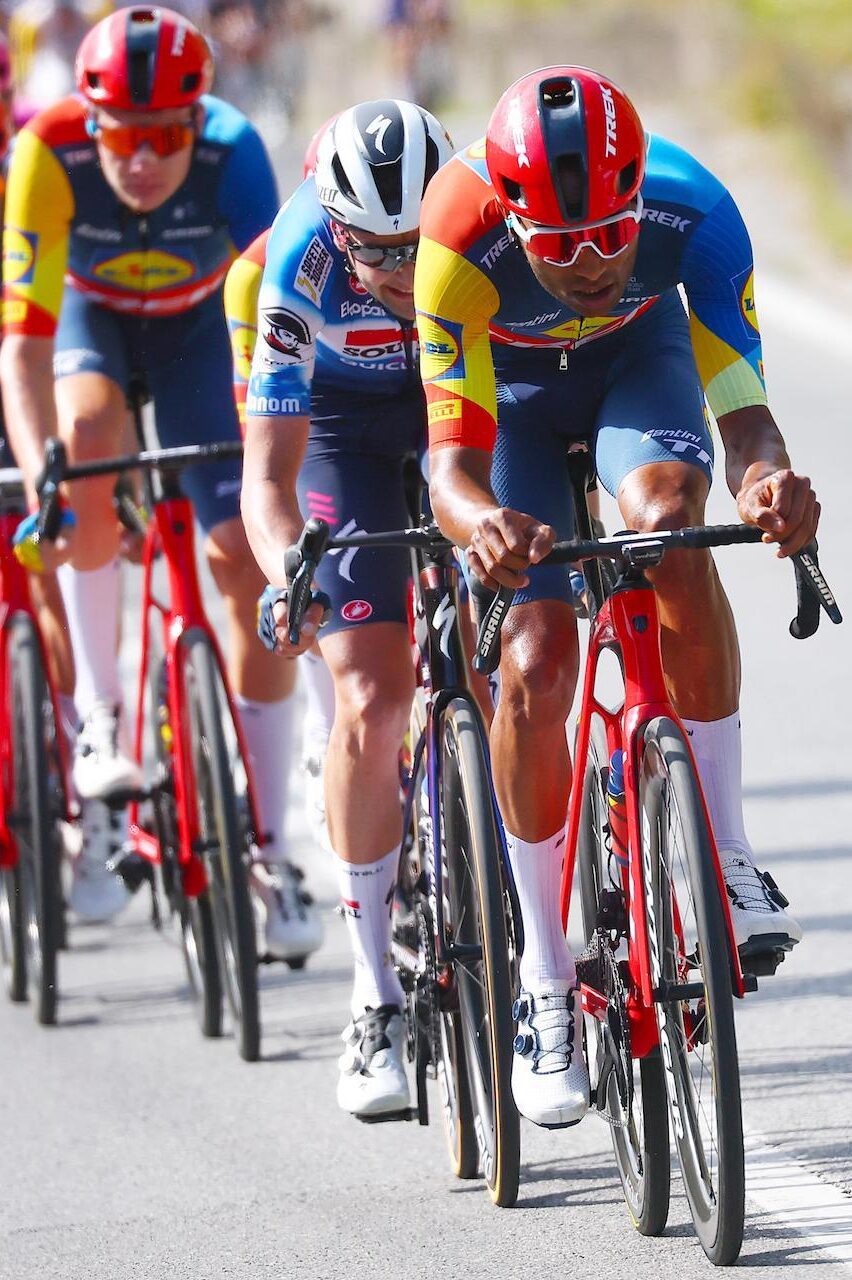It was somewhere in the roundabouts on the outskirts of Lucca that despair began to take hold.
As the Giro d’Italia headed into the birthplace of Mario Cipollini, the race’s all-time leader in stage wins, a four-rider breakaway was up the road, and the sprinters’ teams had marshalled behind for the chase. But something was wrong. A manageable gap, some 45 seconds at the 10 km-to-go mark, wasn’t dropping.
Lidl-Trek threw its full might into the chase for stage 4 winner Jonathan Milan, driving a classic HTC-High Road style train, but as the kilometers ticked by, the gap stayed stubbornly in place. GPS-based time gaps can be of questionable accuracy, but whatever the actual number, the main problem for the chase was that number wasn’t changing.
Depleted or just discouraged, Milan’s teammates disappeared from the front, the Maglia Ciclamino swarmed by a hodgepodge of riders from Soudal-Quick Step, Visma-Lease a Bike, and other sprint hopefuls. No matter, the gap still didn’t budge much, and in the end the break held off the pack by a comfortable 11 seconds, denying the sprinters a crucial chance at a stage win.
“That was of course not the sprint I wanted,” said Milan after winning the bunch gallop for fifth. “But in the end we will have other possibilities. We’ll learn about today and will look forward to the other stages.”
That might be fine for Milan, but any sprinter, and in particular those who haven’t yet won a stage, might want to apply some urgency to the task. There are other possibilities at this Giro, of course. But there won’t be one until stage 11 at the earliest, and there aren’t that many left. For a field packed with fast finishers, every missed opportunity is precious.
What went wrong?
The reasons why the sprint teams missed the catch today are manifold. A big one is that speeds in the peloton have increased in recent years; today’s stage saw an average of 44.5 km/h – unremarkable by current standards but a solid five km/h faster than average speeds of just a decade ago, and that on a stage with more than 2,000 meters of climbing. As we know, aero resistance rises at the square of speed. And with teams employing all manner of aero technology, the difference in CdA from a four-rider break to a pack has narrowed. The playing field now is more level.
Another issue is how we define sprint stages. Not so long ago, a day with this much climbing would have been more evenly divided between the breakaway’s and sprinters’ chances. Today there are more sprinters who can climb, and their teams race accordingly. “It was really hard from the beginning because from the first climb some of the teams started the tactic to drop other sprinters,” noted Tim Merlier (Soudal-Quick Step) at the finish. Sure enough, Merlier was one of the dropped, although he was able to catch back on.
But that ferocious early pace meant an early catch of the day’s first break and a subsequent later move by the ultimately successful foursome. Less time in the wind means a fresher breakaway, better able to match the pace of the pack behind, a pack somewhat depleted by the early pacemaking. And when the break proved harder than expected to catch, that caused a breakdown as doubt about a successful catch crept in. “Some strange tactics,” noted a non-plussed Merlier. “You see what happens if you don’t work well together.”
Dwindling chances
For the rest of the week, attention in the Giro will turn to breakaways and the GC, in particular the question of whether anyone can challenge Tadej Pogačar. The next possible sprint opportunity isn’t until Sunday’s ride into Napoli, but a series of four short climbs in the final 35 km complicates things considerably. In classic Giro fashion, only the first of the four – the longest but also the easiest – is categorized. Never stop being you, Giro organizers.

Stage 11 is a day of two halves: wicked early climbing followed by an almost entirely flat second section, and looks like an auspicious one for on-form sprinters. Stage 12 to Fano is similar to stage 9, with a short-but-steep uncategorized climb just 13 km from the finish. Aside from the dead-flat stage 13 to Cento, only stage 18 to Padova and the final stage in Rome are likely to be sprint finishes. That’s just four bunch gallops left, and then only if the sprint teams don’t screw up the chase.
So far, Merlier and Milan have stage wins, and Milan also has a tidy lead already in the points standings. But that leaves a host of riders who were in the mix today – your Caleb Ewans and Max Kanters; a Fernando Gaviria here or Phil Bauhaus there – playing a game of musical stages. Every time a break steals one from the fast men, it means one more sprinter goes home with sadface.
Because this is the Giro, leave it to a climber to see things most clearly. Speaking after the stage, Visma-Lease a Bike’s Cian Uijtdebroeks, who is in the white jersey of best young rider and targeting a high overall placing, said, “it’s a shame that for Olav (Kooij) we didn’t manage to grab an opportunity that was there. Even though there are a lot of sprint opportunities in this Giro d’Italia, it is and always will be a shame if you let one slip away.”
One did today. Only time will tell if the sprinters’ teams learned their lesson.
What did you think of this story?


